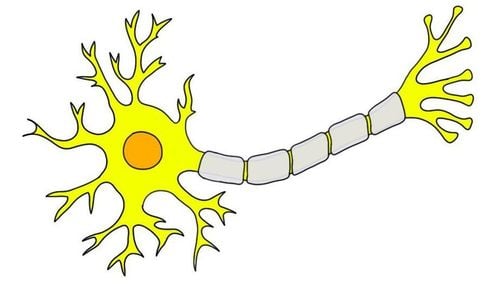This is an automatically translated article.
Krabbe disease is a rare genetic disorder that destroys the protective layer that covers nerve cells in the brain and the entire nervous system in the body.1. What is Krabbe disease?
Krabbe disease is an uncommon and often fatal genetic disorder of the patient's nervous system. This is an inherited disease, meaning it runs in families.
People with Krabbe disease cannot make enough of a substance called galactosylceramidase, which is needed to make the myelin sheath. Myelin is the base substance your body uses to surround and protect nerve fibers. Without this protection, the cells of the brain will die along with the nerves in the brain and other parts of the body will not be able to function properly.
Krabbe disease is found mainly in neonates (onset before 6 months of age), but the condition can also develop later in the patient's life. There is currently no cure for Krabbe disease, and most infants with it will die before the age of 2.
2. What causes Krabbe disease?
Krabbe disease is an inherited disorder, which means that a person will get the disease from their parents. The cause of Krabbe disease is a genetic mutation - a permanent change in the DNA sequence that causes a certain mutated gene. Mutations affect the information that is coded to make up the body's cells and functions.
Krabbe disease gene can be found on chromosome 14 . The child receives an abnormal gene from both parents and inherits the disease. The abnormal genes lead to a deficiency in an important enzyme your body needs called galactosylceramidase (GALC).
The body needs GALC to make and maintain myelin, a substance that surrounds and helps protect your nerves. In people with Krabbe disease, or those without GALC, substances called galactolipids build up in the brain. Galactolipids are stored by cells called globoid cells. For this reason, Krabbe disease is also sometimes called globoid leukemia.
There are two types of Krabbe disease:
Early-onset Krabbe disease, which occurs in the first months after birth, typically before an infant reaches 6 months of age. Krabbe disease is of late onset, occurring later in childhood or in early adolescence.

Trẻ sơ sinh là đối tượng dễ mắc bệnh Krabbe
3. Who is at risk for Krabbe disease?
In general, Krabbe disease is very rare. According to statistics, this disease affects about 1 in 100,000 people in the United States. The disease occurs most often in people of Scandinavian ancestry. A child has a one in four chance of developing the disorder if both parents have the gene for the disease.
4. What are the complications of Krabbe disease?
Krabbe disease can be life-threatening because of its ability to damage the patient's central nervous system, complications include:
Blindness; Deaf; Severe inability to use muscle force; Severe mental breakdown; Respiratory failure and death. Infants with Krabbe disease most often die before the age of 2. Children with the disease in adulthood will live a little longer, but will usually also die between 2 and 7 years after being diagnosed. The prospect of a long-term treatment for people with Krabbe disease is being studied further by scientists.

Bệnh Krabbe gây ra suy hô hấp và nhiều biến chứng nguy hiểm
5. How can Krabbe disease be prevented?
If both parents carry the genetic defect that causes Krabbe disease, the chance of passing the disease on to their child is 25%. The 25% risk cannot be lower if both parents carry the gene mutation. The only way to avoid the risk is to decide not to have children.
However, parents can find out if they carry the Krabbe disease gene through a blood test. If there is a family history of Krabbe disease, prenatal tests may be done to screen the fetus for the condition.
Genetic counseling is recommended for people with a family history of Krabbe disease if they are considering having children.
Customers can directly go to Vinmec Health system nationwide to visit or contact the hotline here for support.
Articles refer to sources: Mayoclinic.org, Healthline.com













